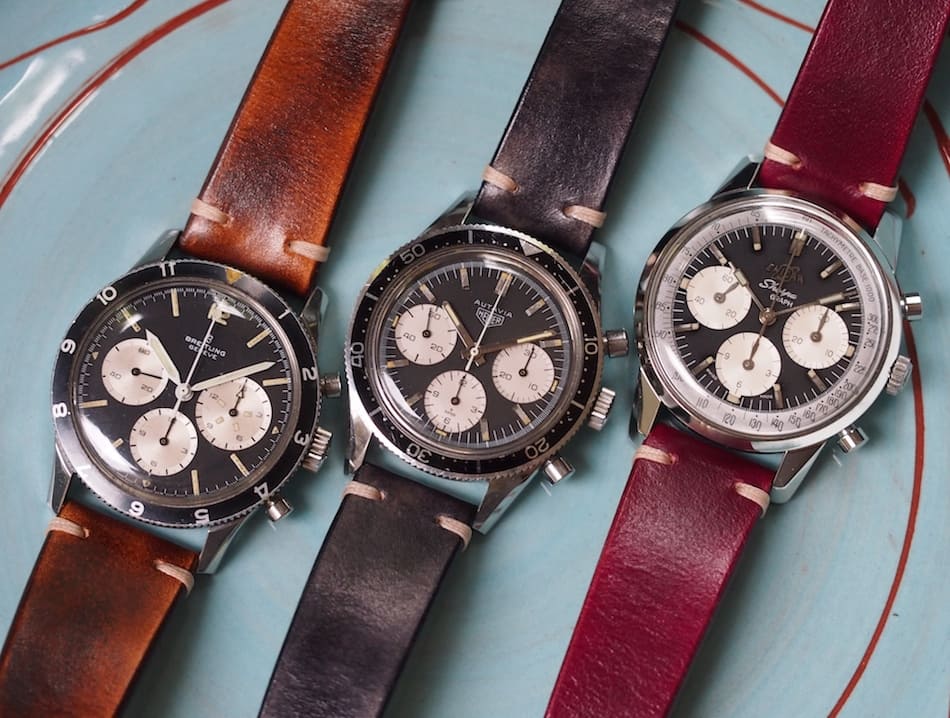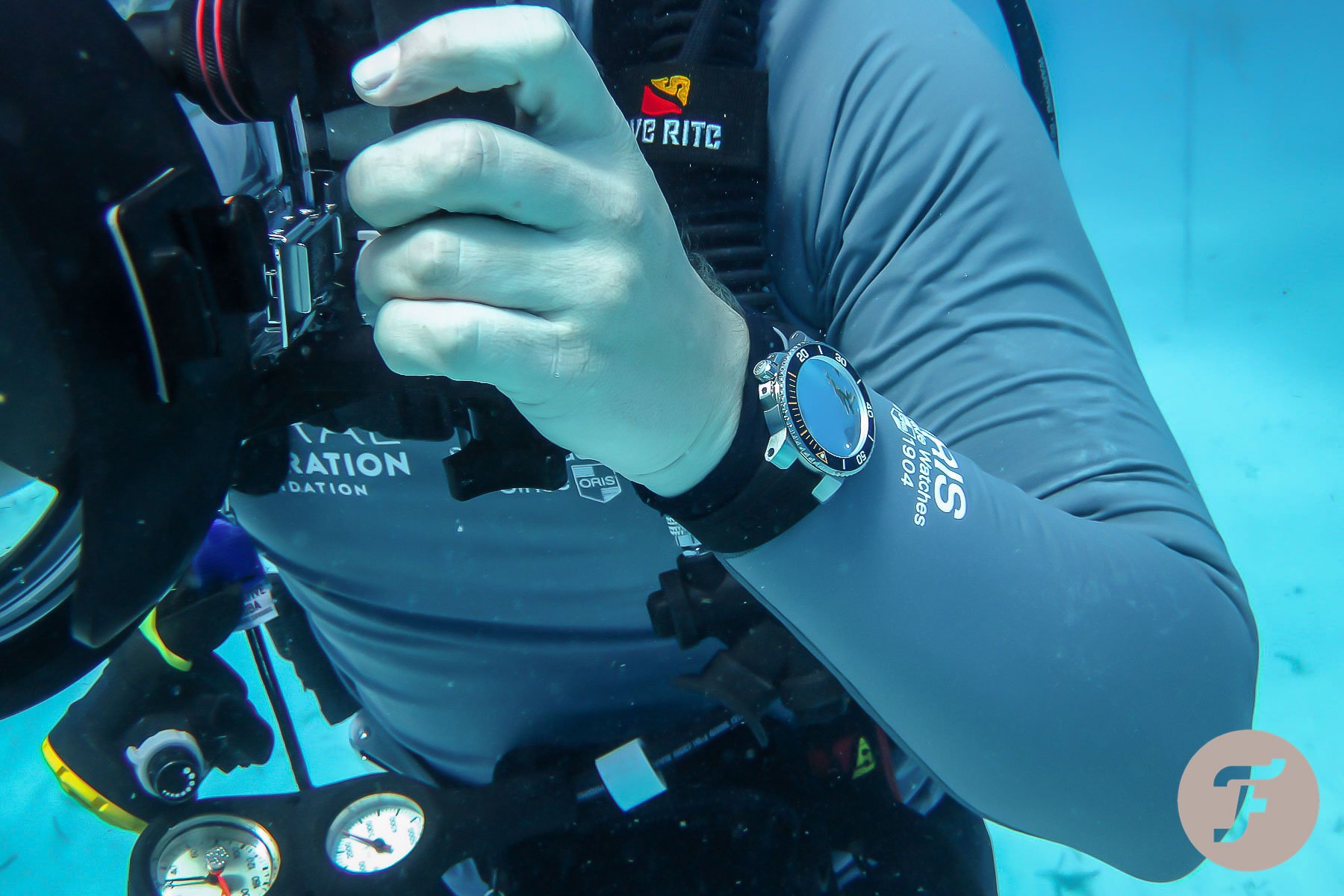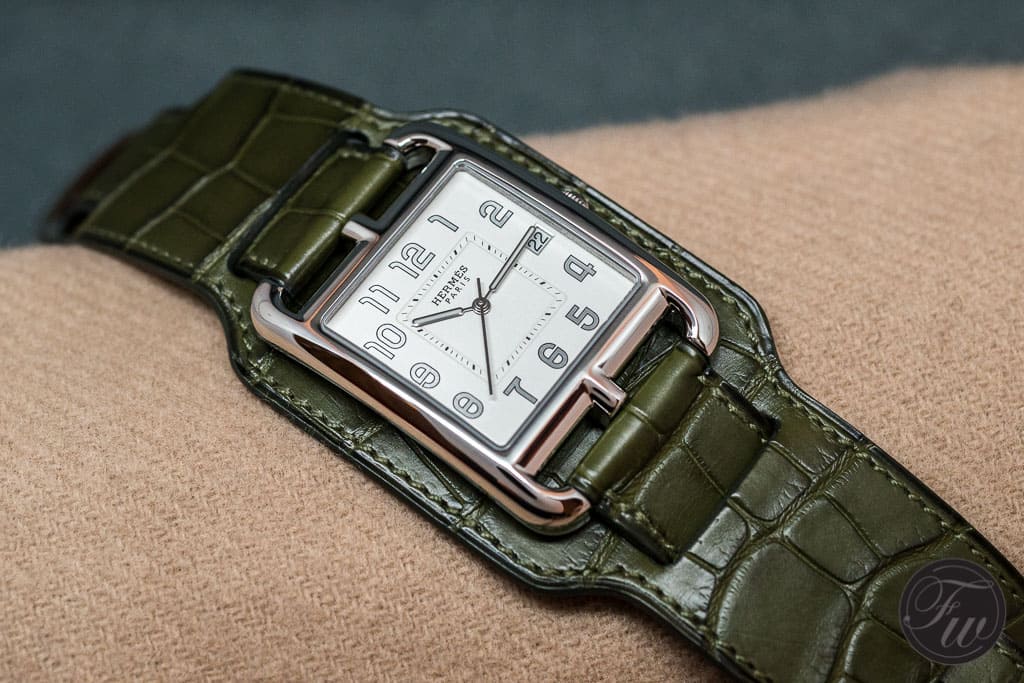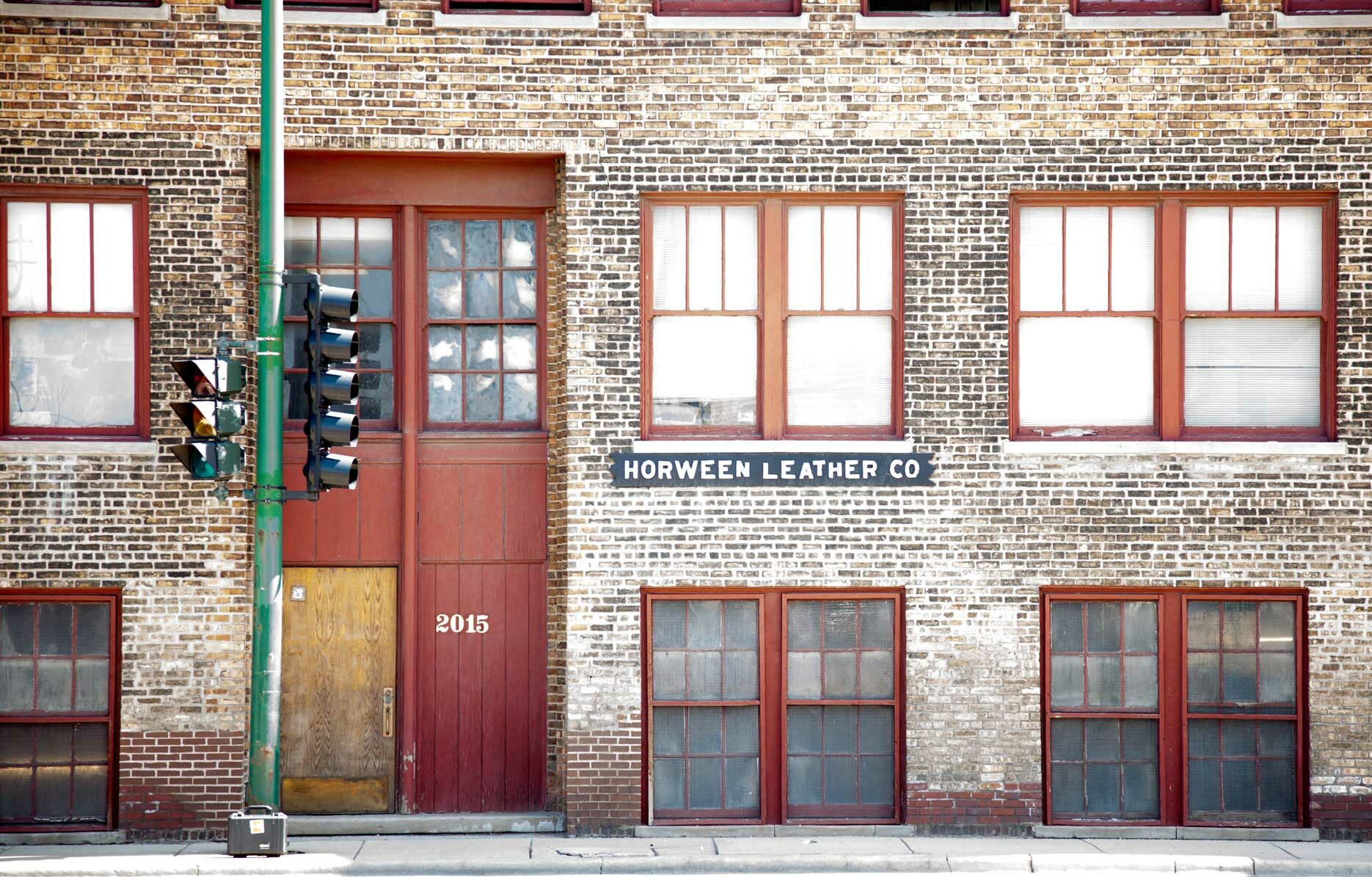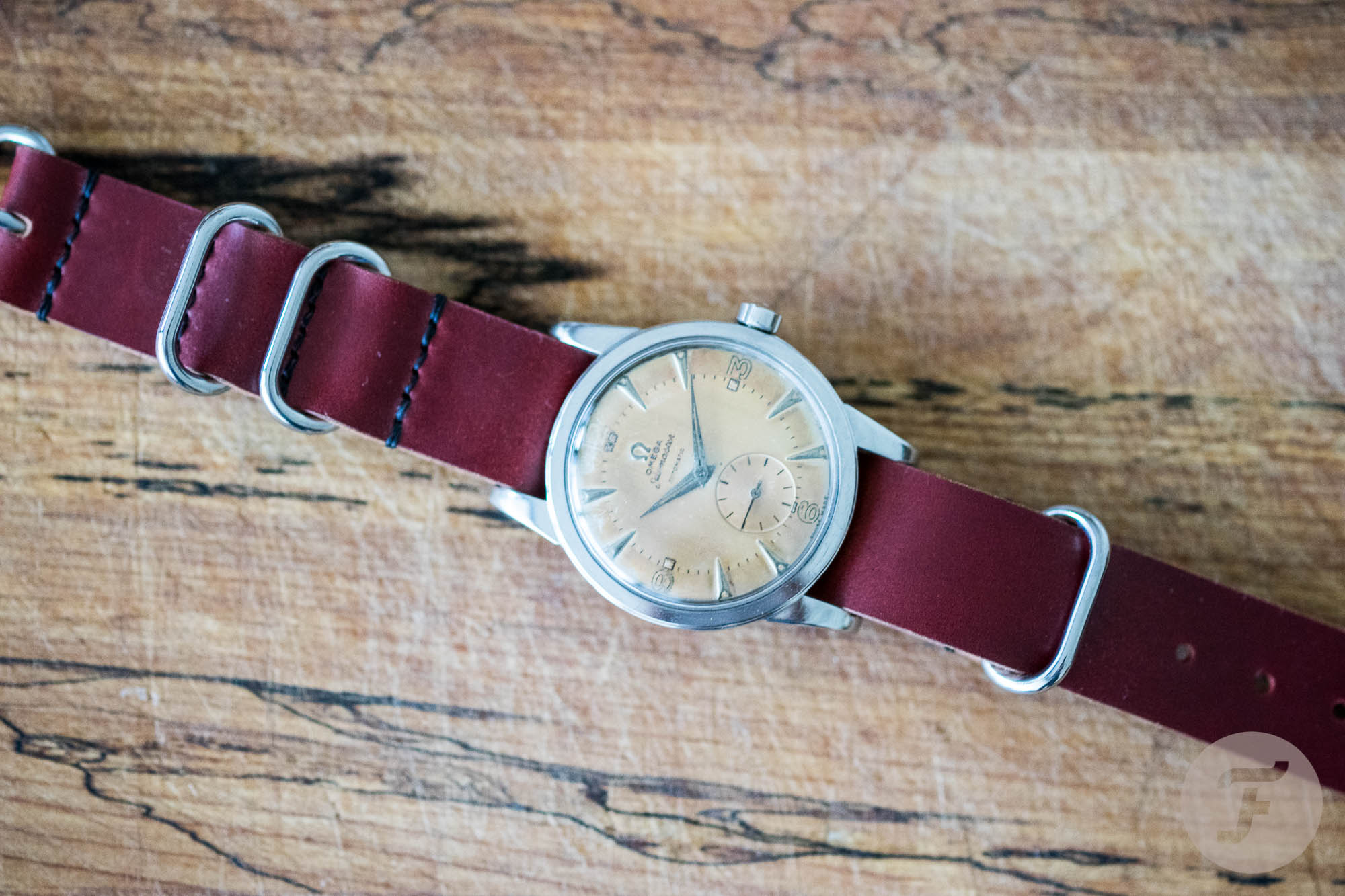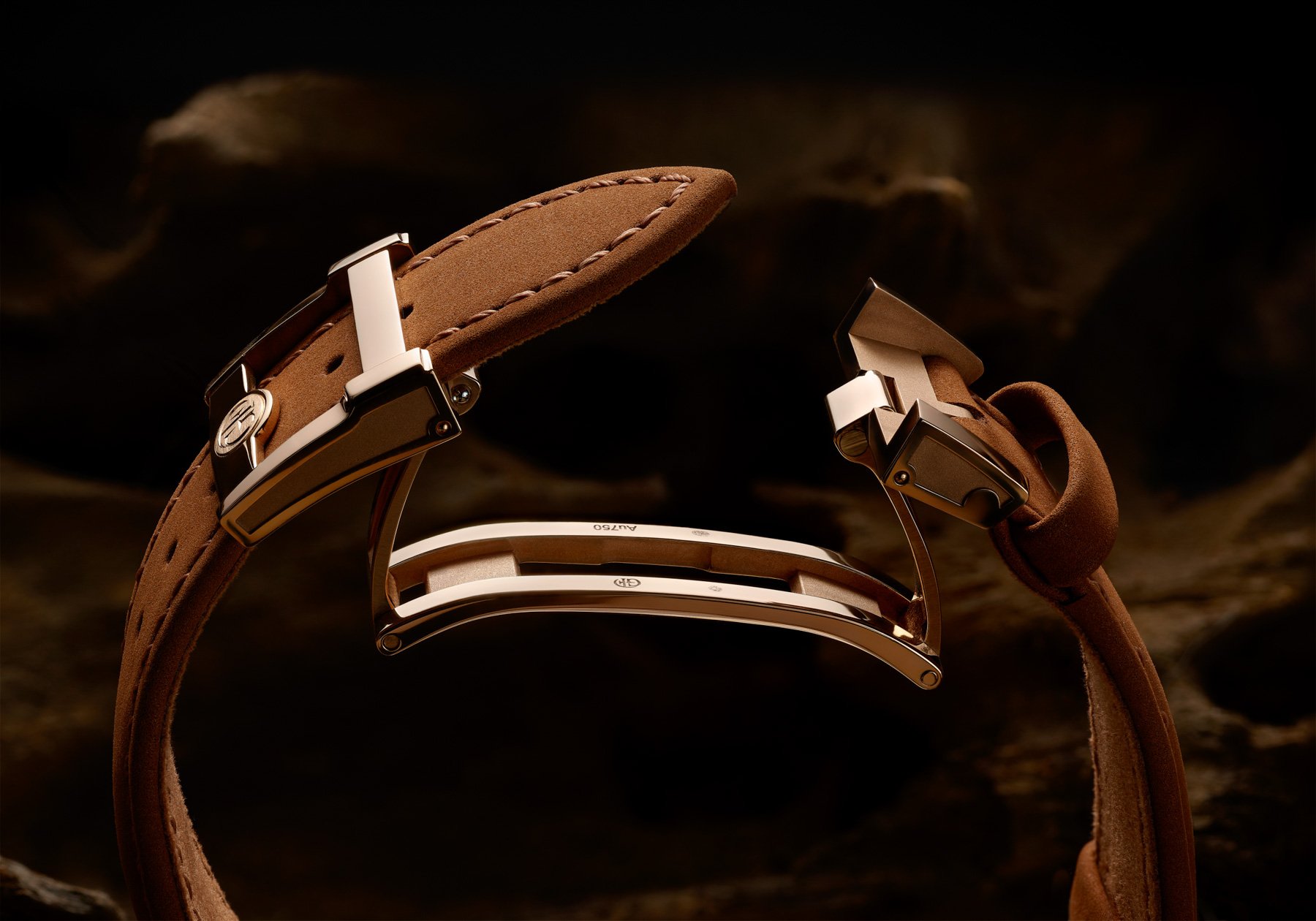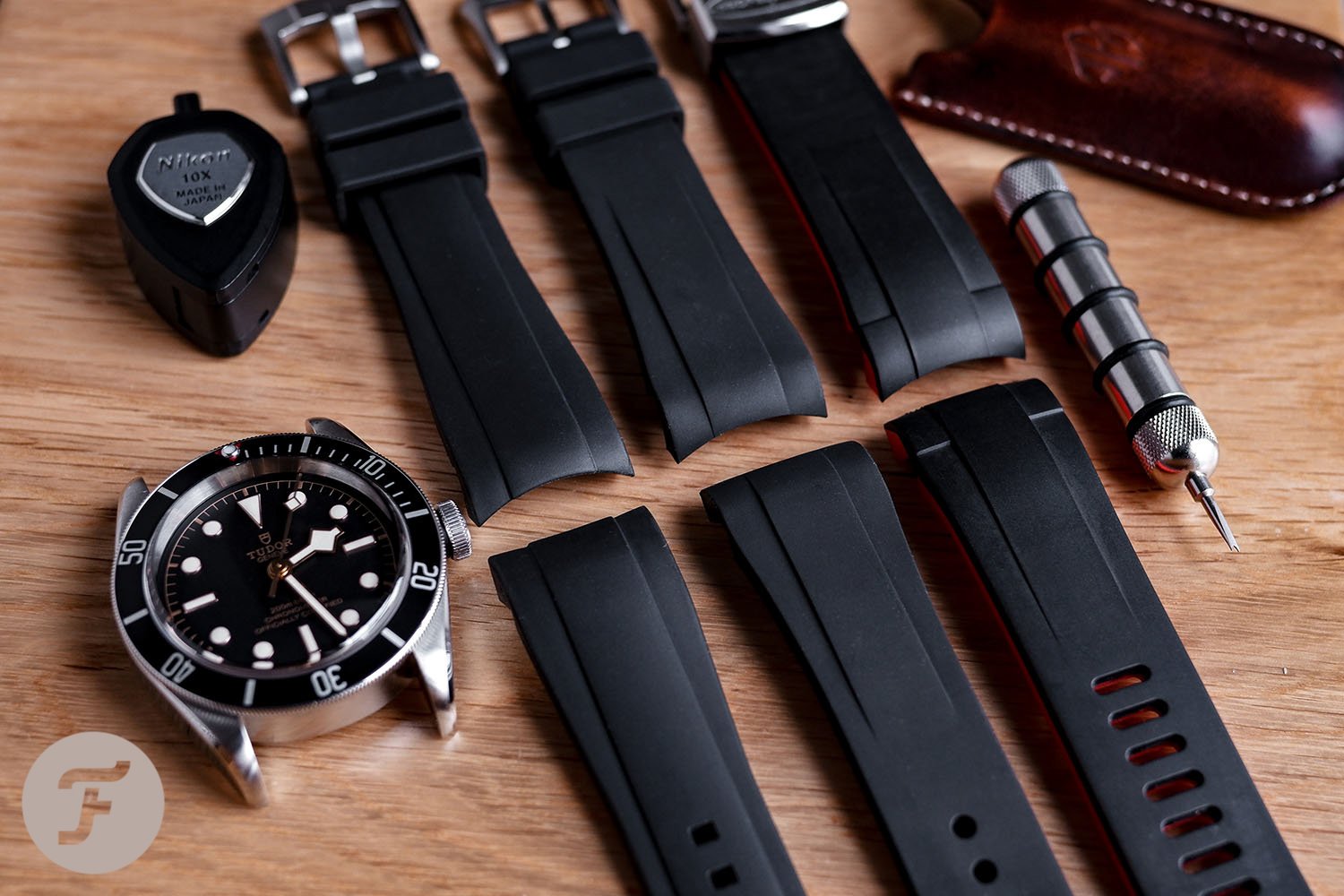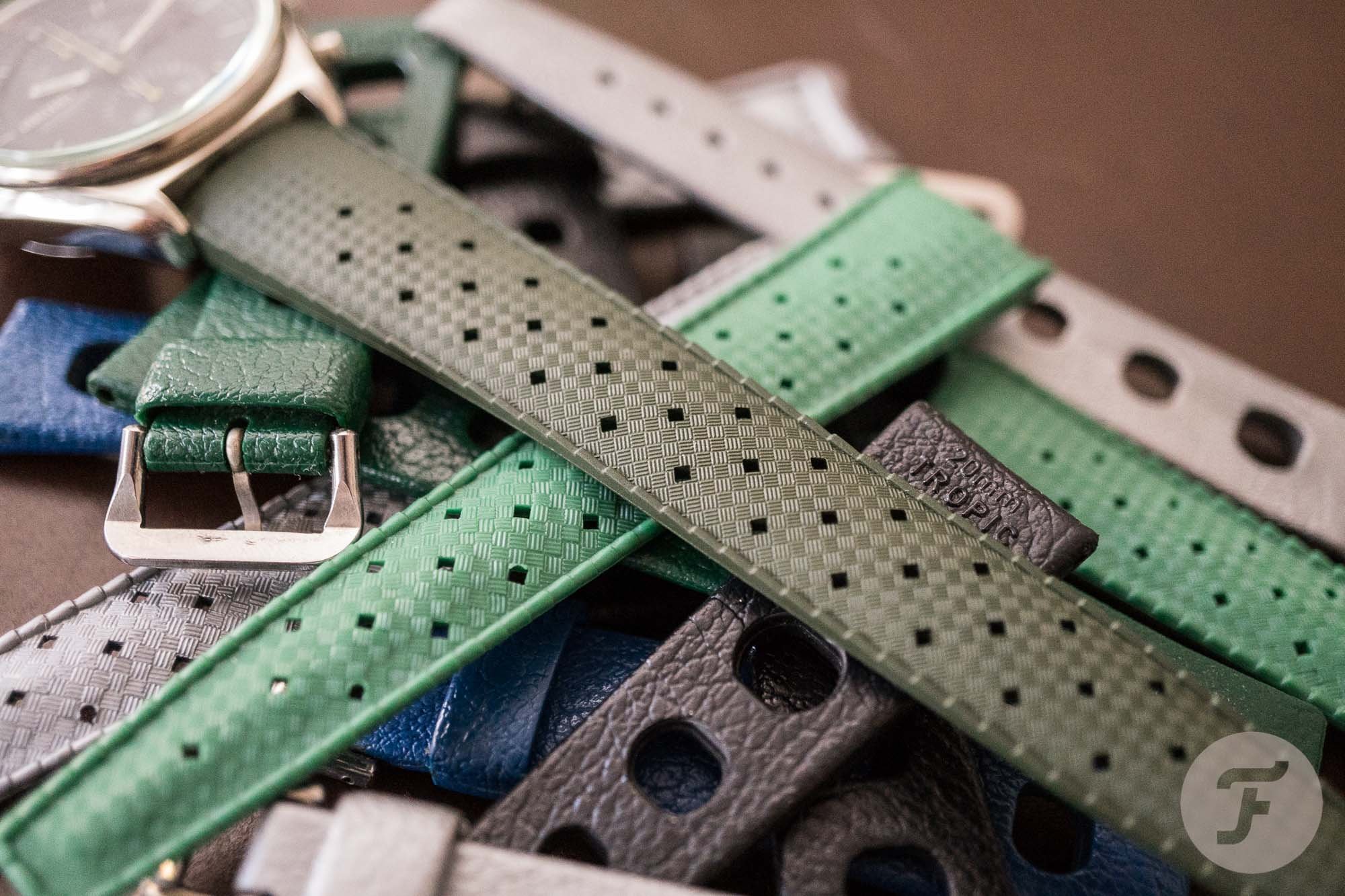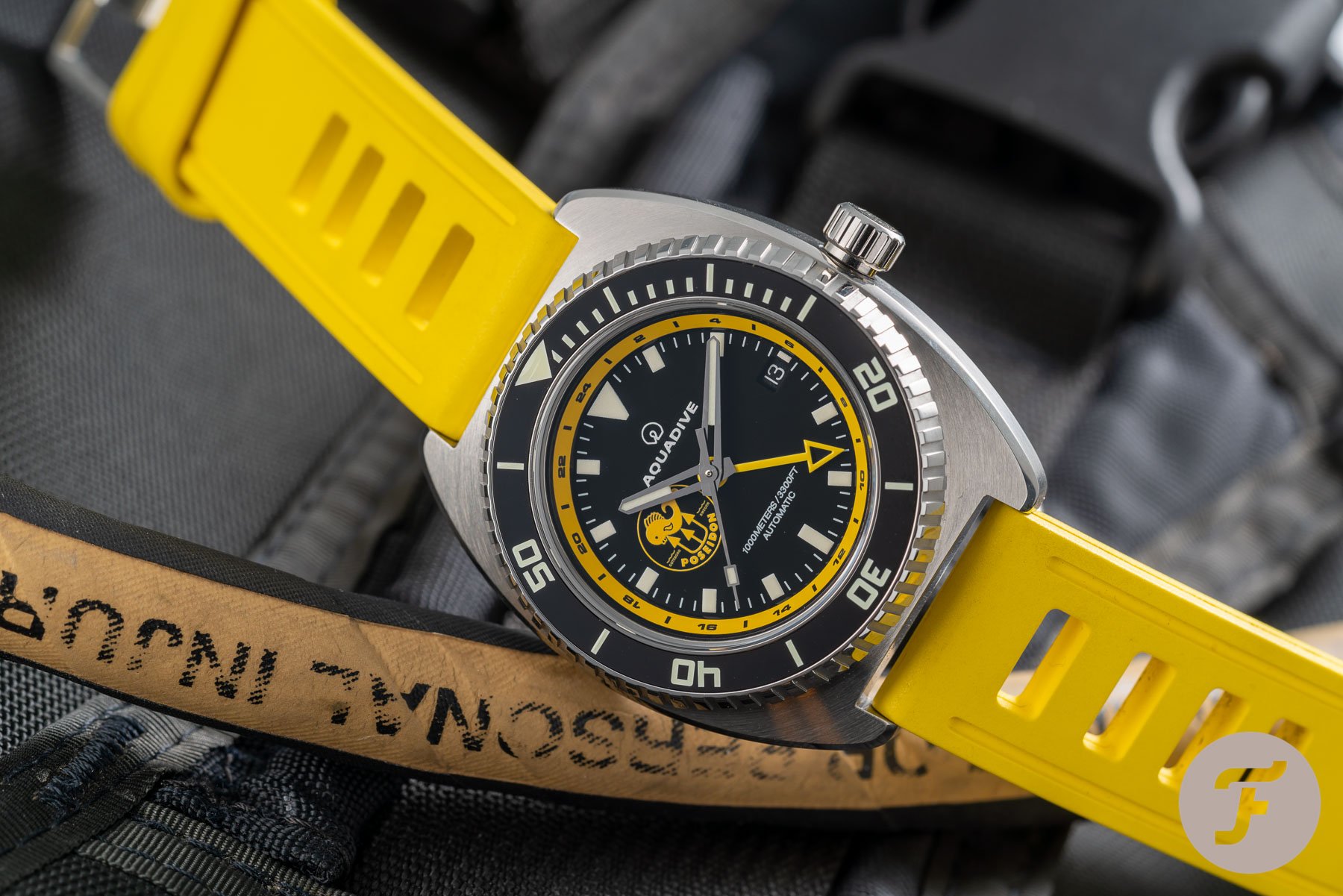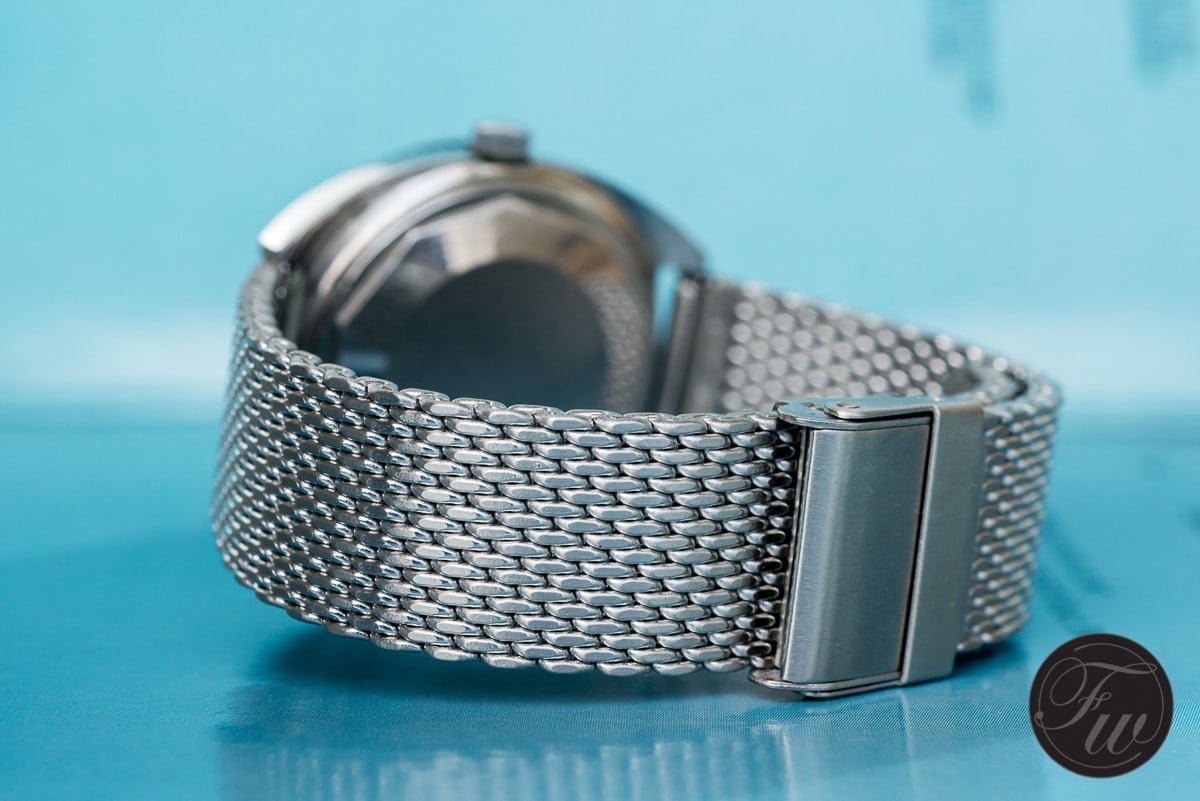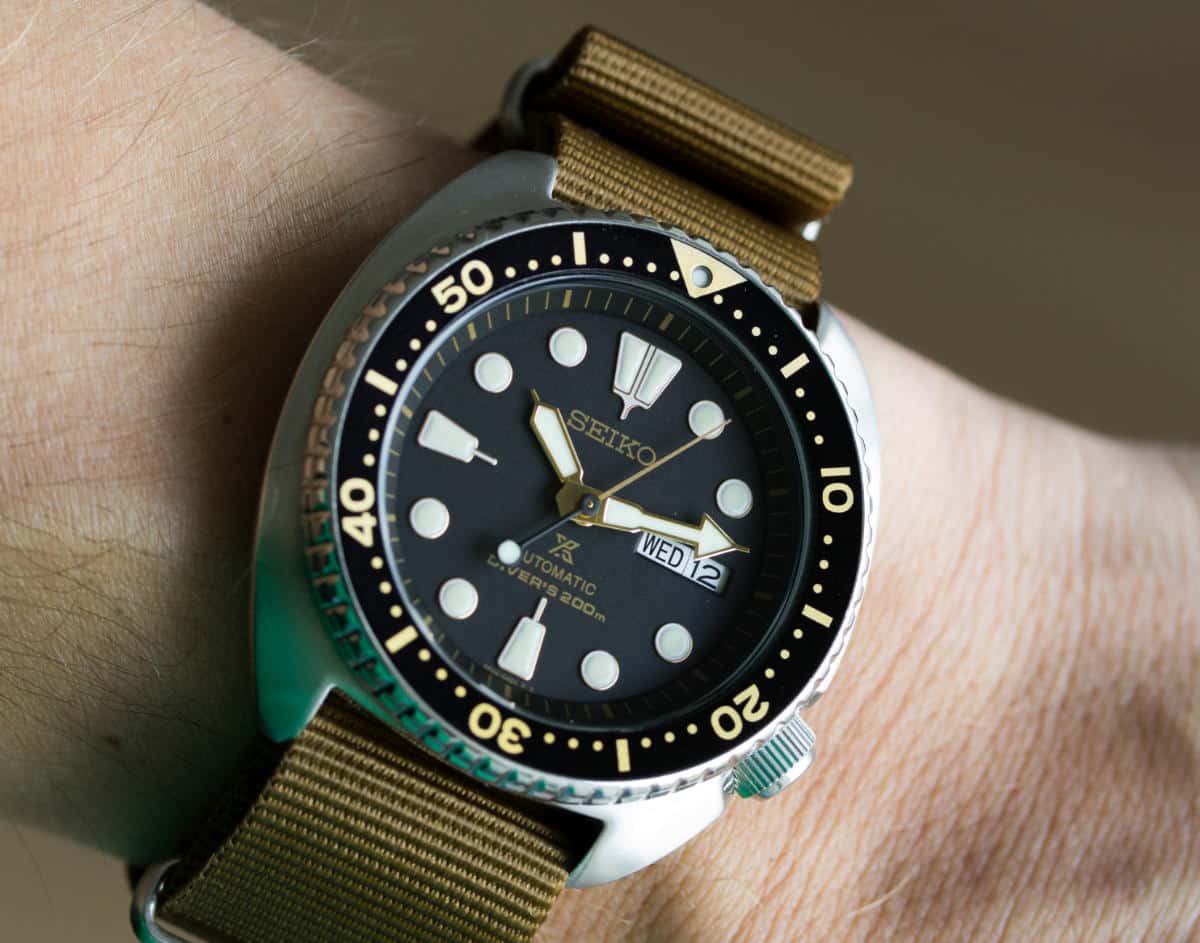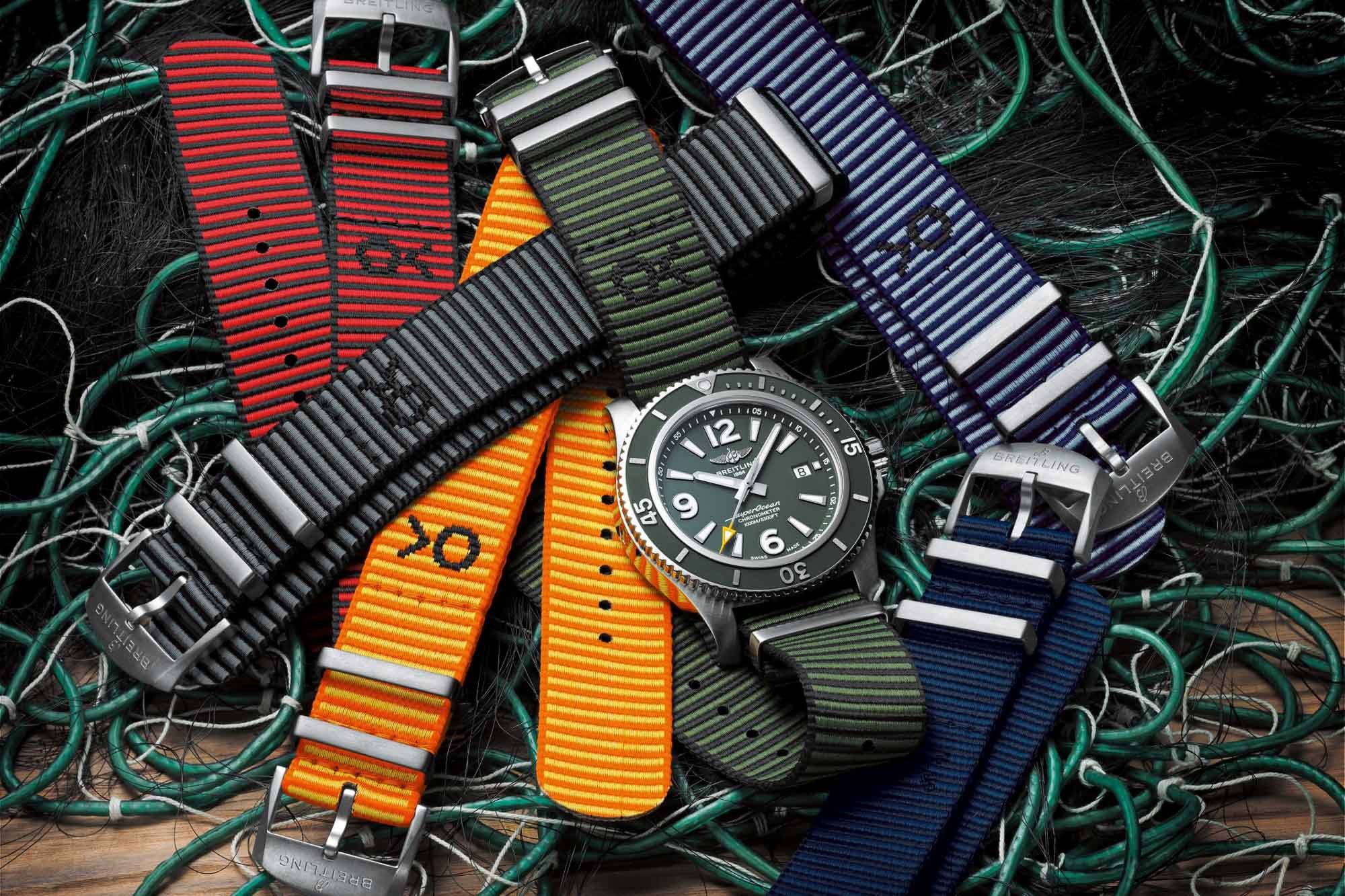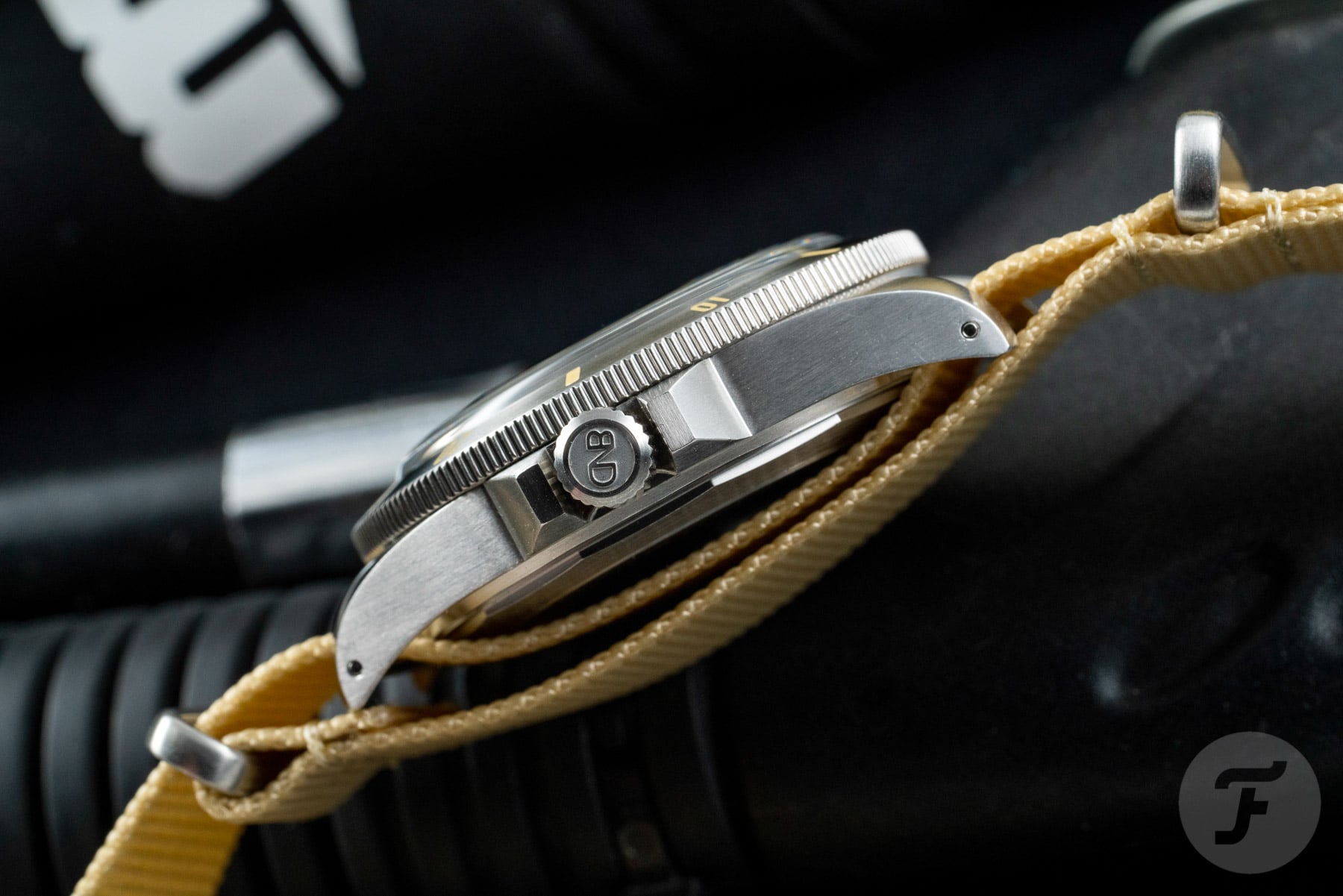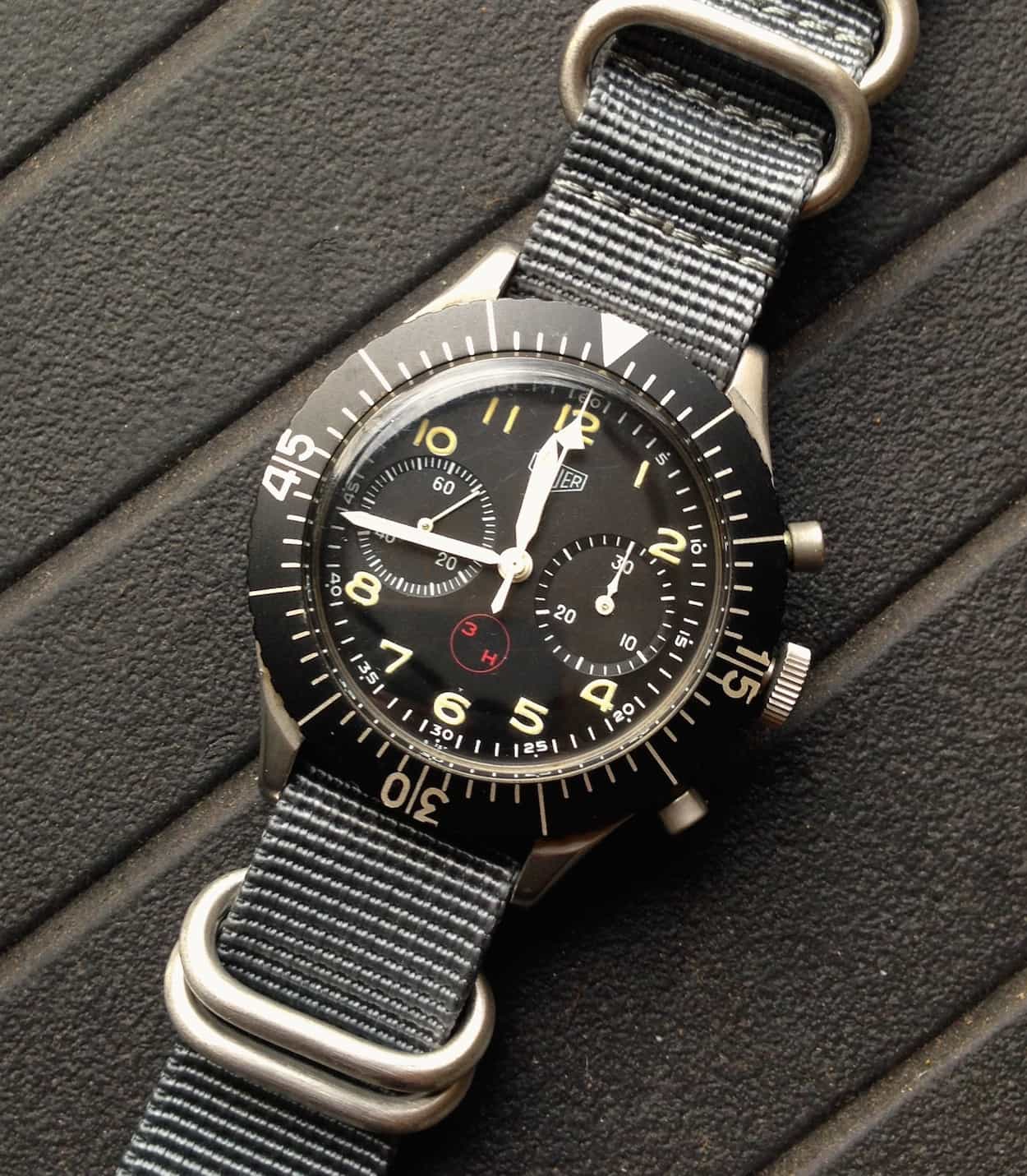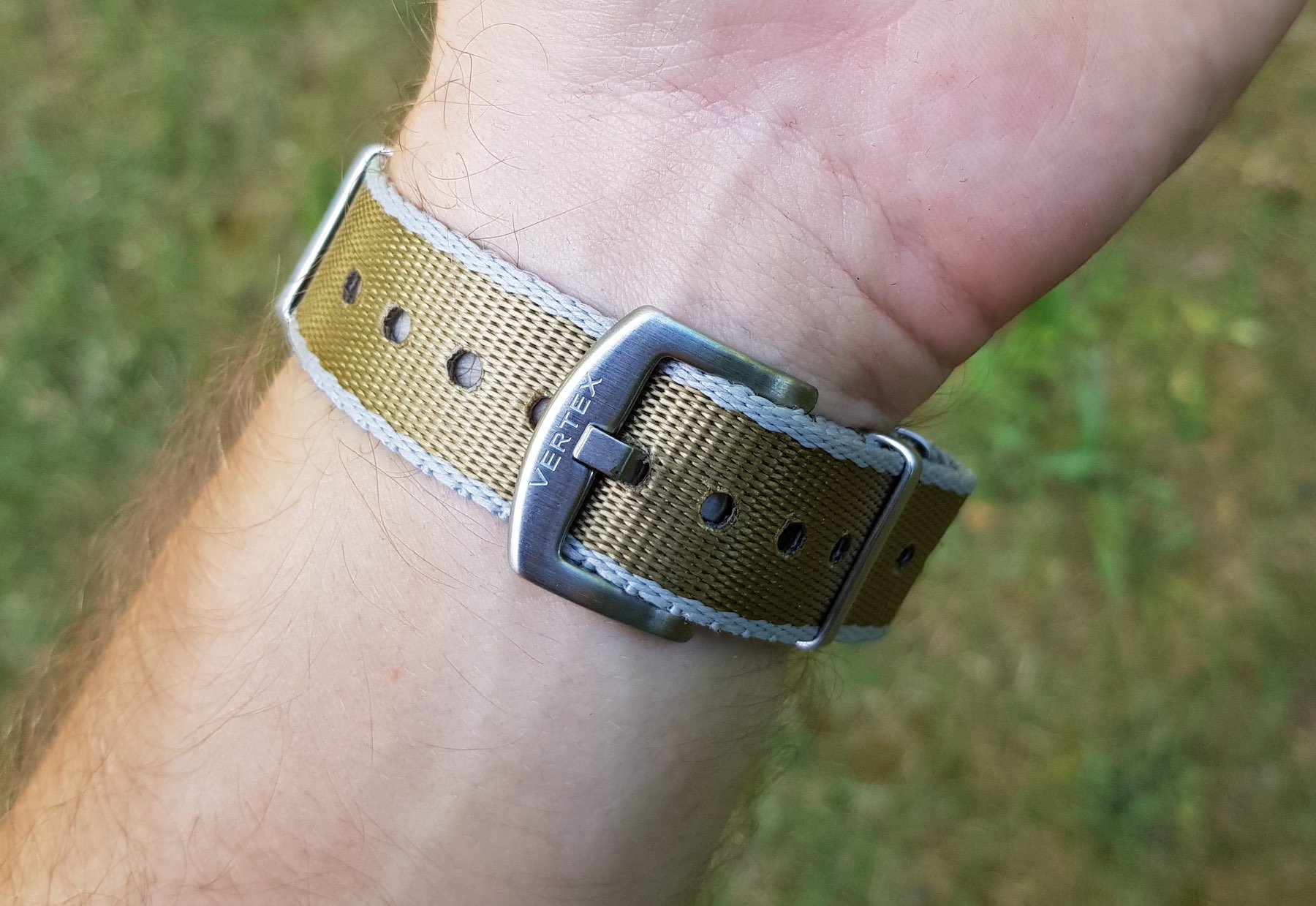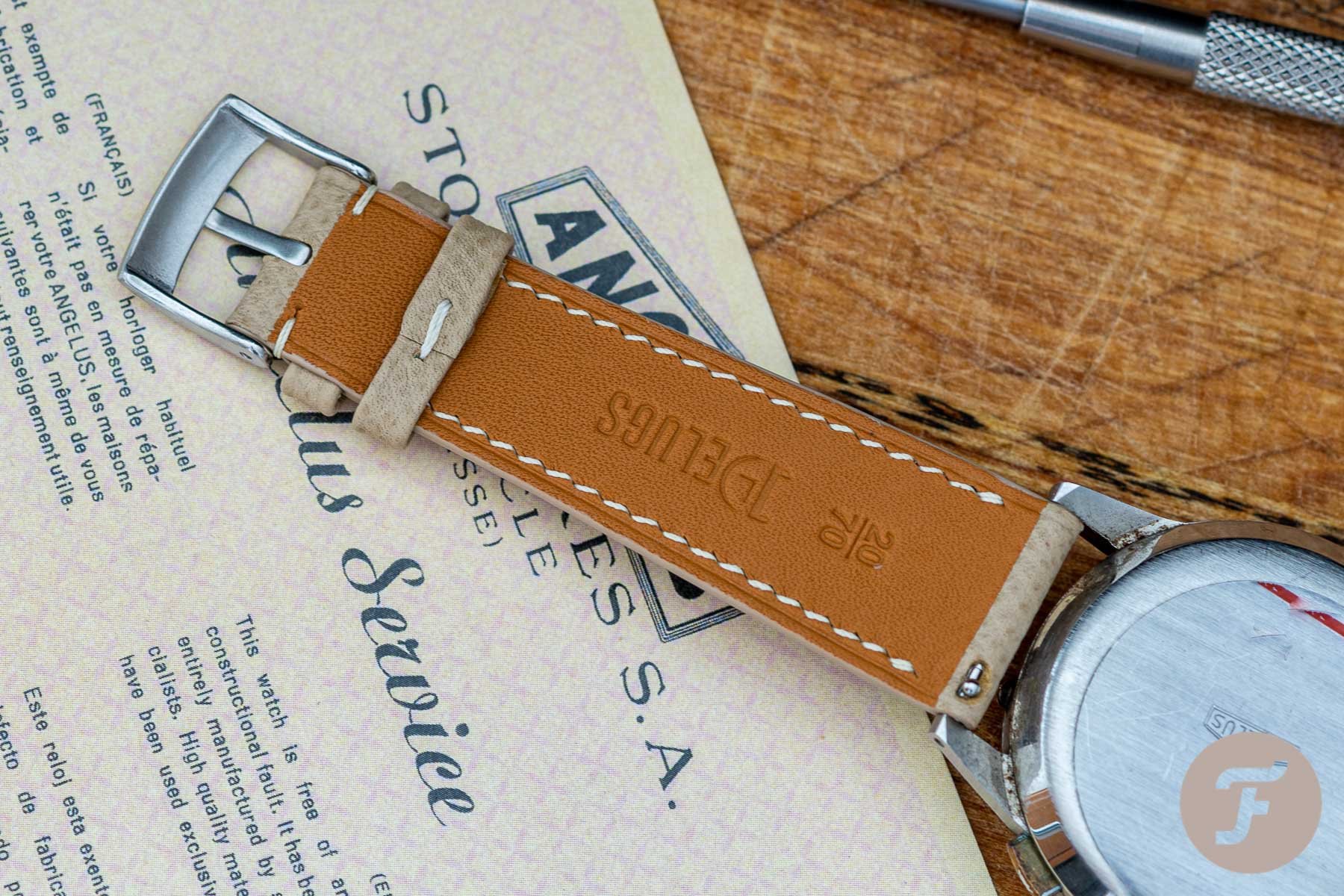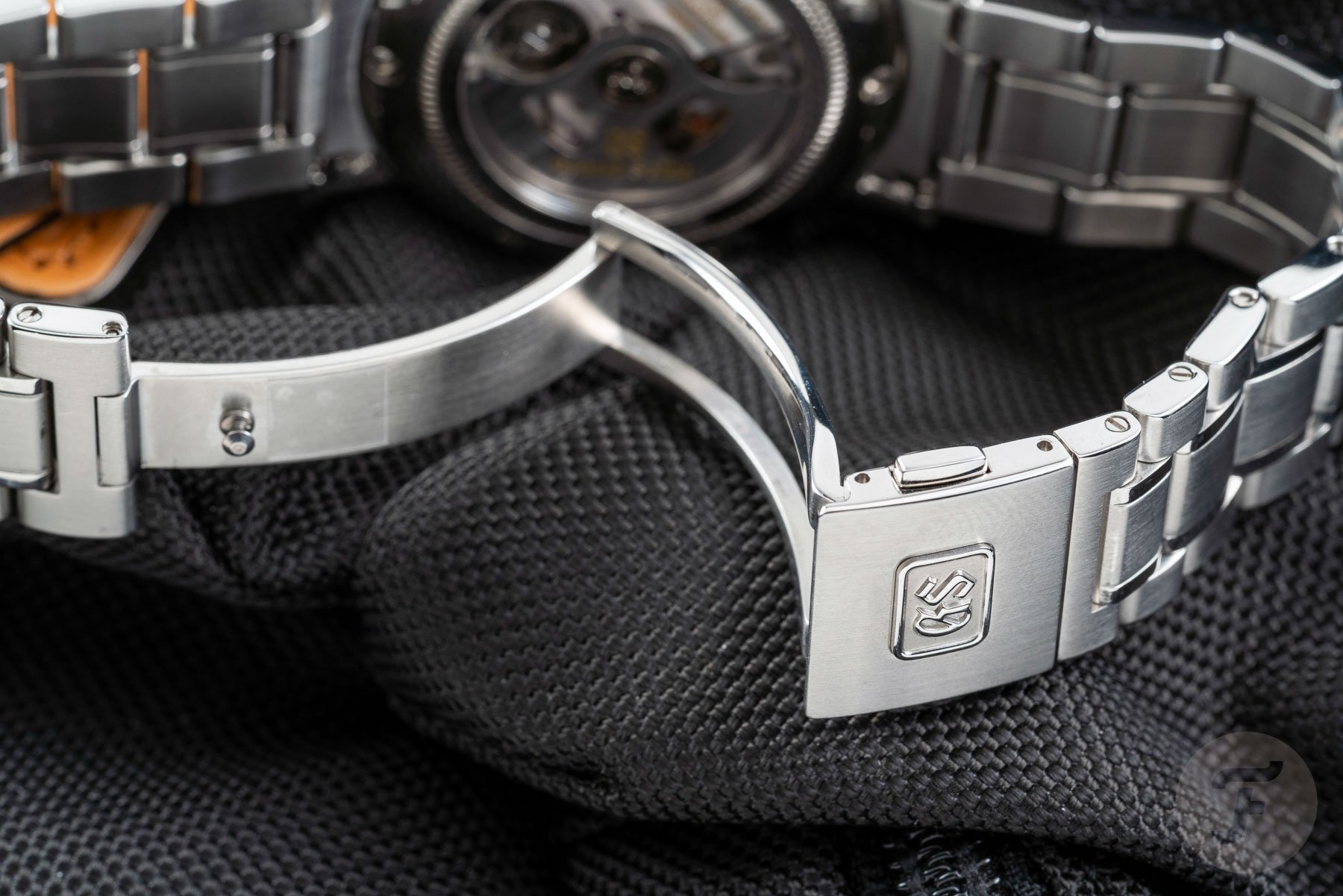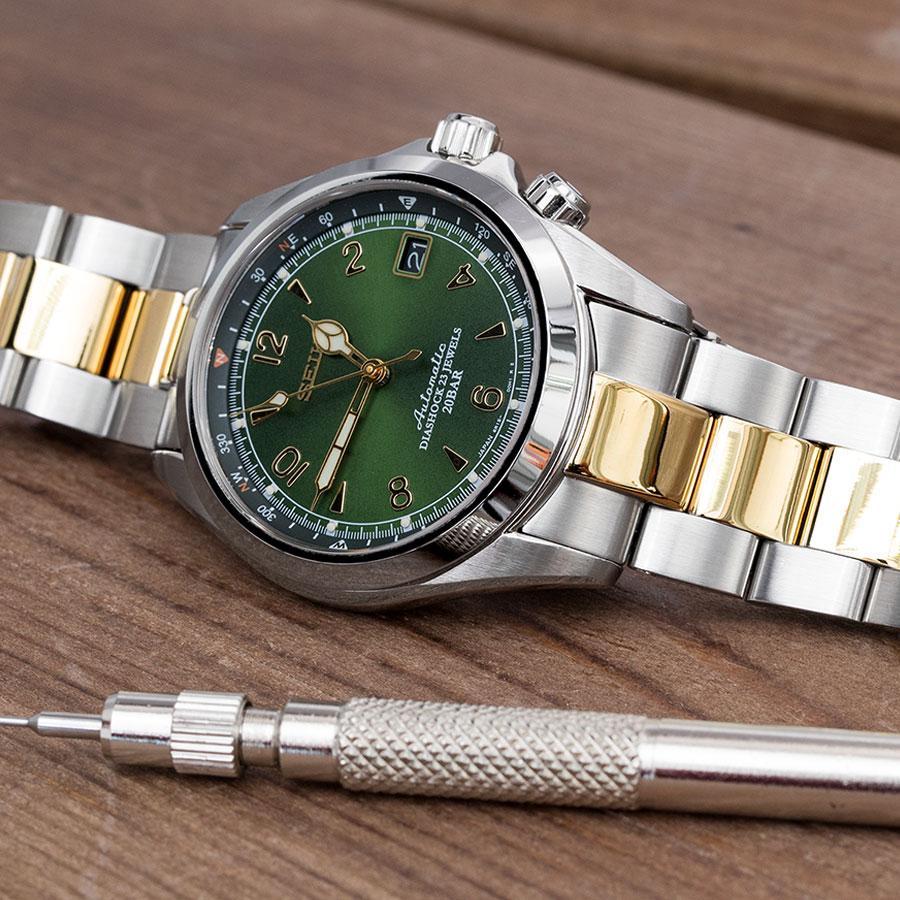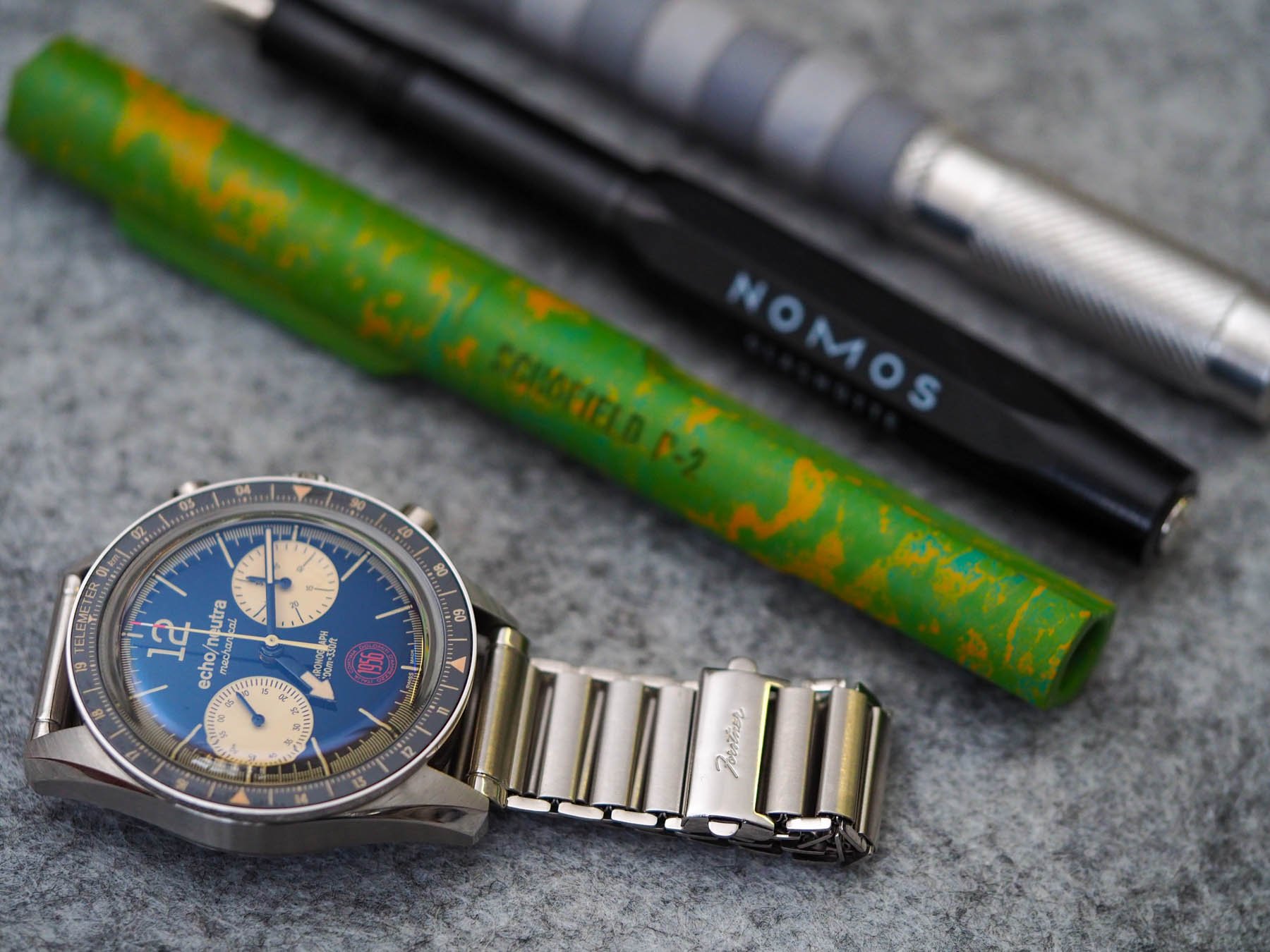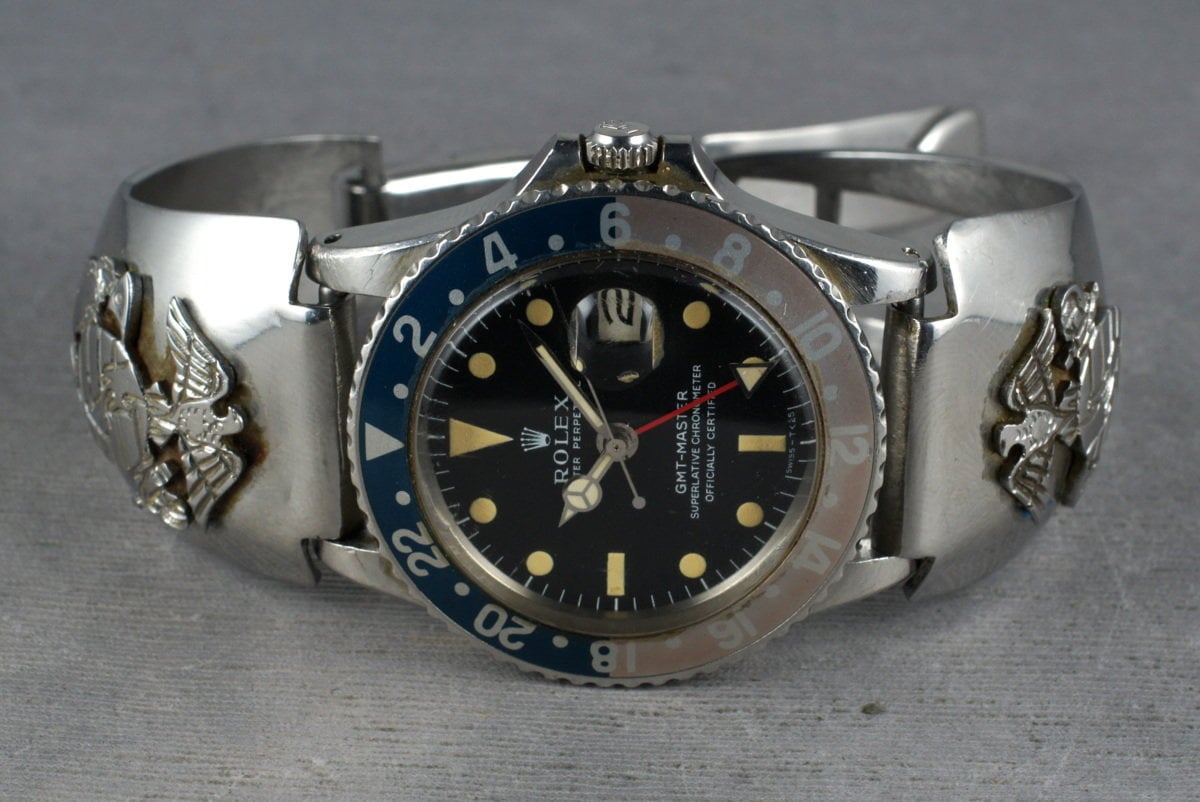Spring-Bars And NATOs: A What’s What Of Watch Straps, Buckles, And Bars
When you buy a watch, it always comes with some way of securing it to your wrist. Bracelet, band, or strap, most people are content to wear the watch how it was intended. But for some, the factory standard is just the beginning, and sometimes not necessarily the best fit. There’s a whole world of aftermarket accessories for a watch, providing the opportunity to dress it up, dress it down, play in the mud, or just make the watch uniquely yours. I’m talking about Horween leather bands, Zulu Natos, thicker spring bars, and Olongapo (trust me on this). So strap in and strap up, this long read is about to give you the low down on what’s going on around your wrist and how it can be so much better.
It is a rare day when a watch is perfect right out of the box. Sure, the watch is fine — you drooled over it for six months before pulling the trigger — but something about it on your wrist just isn’t working. And then it clicks: the alligator strap is so your grandpa’s style, or the damn bracelet is pulling chunks of your wrist fur out every time you scratch your nose. For some, it’s a lot more subtle or prolonged a realization. There’s an idea of: “this is good, but…”, or even a general loss of luster as your relationship with the watch progresses.
Don’t Sell. Buy.
This is unfortunately where some people not savvy to aftermarket straps might experience buyer’s remorse. Some may even move to sell the piece altogether. Don’t! I personally loathe quick watch flippers. I believe that acquiring and wearing watches is an exercise in developing self and relationship skills, not so much in financial skills. You bought the thing, for one reason or another, honor your past self’s decision and spend some time to get to know it. You can make the process a whole lot more enjoyable by switching up the bracelet or strap for something that present-you finds a whole lot more, well, you. And if you love the watch completely already, you can also join in! In fact, if you haven’t already, you’re about to have a lot more fun.
“The clothes make the man.” Well, the strap/bracelet makes the watch (which also makes the man).
Think about it, a new way of strapping a watch to your wrist gives you 50% of a new watch, but 100% of the feeling. “The clothes make the man.” Well, the strap/bracelet makes the watch (which also makes the man). Sure, Italian calf leather is not as good as a chronograph at measuring elapsed time, but for appearance’s sake, and for the feel of it, it still contributes quite a bit to the timepiece itself.
Looks Good Working Hard
And the attachment accoutrement is doing real work too. Whatever the watch cost, it’s valuable, especially (hopefully) to you. All those features and water resistance you agonizingly shopped out are arguably less enjoyable when unintentionally at the bottom of the sea due to a broken strap. You don’t (again, I hope) want your fist-pumping at your next Norwegian Black Metal concert to lead to a stomped-on watch (and body) as you crawl around the mosh pit trying to retrieve it. The watch needs to stay on your wrist until you decide to take it off.
So, it’s important you do what you need to enjoy your watch. If you’re going to do that, it’s important that what you choose continues to keep the watch on your wrist. In some cases, an upgraded strap has nothing (read: slightly less) to do with aesthetics and instead with making absolutely sure that the watch is going to stay on your wrist. We’ll cover that too. But first: let’s get pretty.
Italy’s Artisanal Leathers
When I think of Italy (I haven’t been there yet), I think of food, seaside cliff towns, and quality leather goods, including watch straps (at least for the sake of this article). It is a country that comfortably straddles the renaissance and modern age, with a strong and still intact artisanal industry many generations in the making. Fitting then, like their textiles and olive oil, that Italy’s leather industry is held in the highest regard internationally. In truth, Italy has long been known for its superior leathercraft, from tanning, shaping, and construction.
This is attributed to their dedication to preserving the traditional techniques devoid of modern mechanization and chemicals. Hides are cleaned and tanned by hand. The craftspeople vegetable tan the leather, as opposed to using chrome. Without embracing too many advances in materials/technology, they’ve had the best part of 400 years or so to perfect the technique.
Options for Italian leather watch straps abound with options for color, cut, and finish approaching infinite. One is only limited by their imagination. Green calf racing strap? Sure. Purple Alligator? Well, if you want. Even if your strap isn’t made in Italy, if it’s from a reputable seller and uses Italian leather, you can typically rest assured it’s a superior product. Of course, in that case, stitching, clasp, and spring bars (we’ll get to those) are out of Italia’s hands.
Chicago’s Horween
There is another name that gets bandied about in conversations about premium leather, and for good reason. Horween Leather Company, of Chicago, Illinois, is one of the oldest, continually running tanneries in the United States. It’s hard to say what they are most famous for, their fame is that broad. They supply the leather for the official basketballs of the NBA, as well as for the footballs for the NFL. Beyond that, leather products like Shell Cordovan have almost become synonymous with Horween.
Shell Cordovan is a horse-derived leather that resists creasing and takes a polished luster like no other. Another product, Chromexcel is a complex process that, while using chrome, also employs vegetable tanning techniques and materials, producing a supple, rich leather that lasts and develops its own wear character over time. Since Horween primarily uses cow and horse hides, with some buffalo, you’re not going to find any purple crocodile watch straps with their badge. And they don’t make straps anyway; they are exclusively a tannery. But they supply their leather to some of the biggest names in leathercraft and as well as micro-brand craftsmen/women.
A Horween leather watch strap, Chromexcel or cordovan, will command a premium price, typically over an Italian leather equivalent. But what you get, regardless of the strap maker, is the highest quality of hide. I can attest to having a very unique experience strapping my first Chromexcel strap to my wrist, a simple 3-ring Zulu-styled pass-through (more about something very similar to my own here). I can only describe it as “butter on the wrist.” It even smelled good too.
Nice Leather: Countries Compete
Italy and the Horween Leather Company are not the end-all, be-all of quality leather watch straps. There are excellent tanneries all over the world producing products that can hold their own in comparison. Germany and the UK produce some excellent suedes. The UK does Shell Cordovan well too. French calf leather is a luxurious product. It’s important that no matter where the leather of your strap is from, it’s from a reputable source. Robert-Jan already got a taste of the toxicity surrounding conversations about sustainability in the comments of an article he wrote about “vegan leather” watch straps, but I’ll weather the storm by also dipping a toe into the topic.
Take The High Road
Regardless of which way you may care about trigger words like “sustainable” and “ecologically friendly”, there is an argument (many arguments actually) to be made for quality leather products. Leather is a sustainable product — or should be — in that it is replenishable. What is not sustainable is employing practices of raising cattle and tanning leather that destroy the environment.
Europe for the most part has the process down pat. Limited real estate and an emphasis on longevity and locality have ingrained a cyclical nature of production into much of what is made in Europe, cattle and leather included. The U.S., well, we’ll see. We could certainly do better, but at least Horween is doing its part. It’s also important that whatever you’re putting in or on your body isn’t actively harming you (don’t eat your straps, please). Quality leathers derived from vegetable tanning aren’t going to have any distasteful chemicals in them to leech into your skin.
Healthy, happy people… make quality products. Quality products last longer…
And if I can’t convince you on the environmental front, the socio/economic aspects will have to do. There’s a reason that Horween and Italy’s leather industry are so long-lived. Socio/economic sustainability is (almost) just as important as environmental sustainability. Healthy, happy people secure in their livelihoods make quality products. Quality products last longer and age well, reducing feeding into the rat race that is 21st-century consumerism. So, spend a little bit more, buy the quality leather watch strap, and inwardly (or outwardly) gloat when your annoying, plastic-clothed brother-in-law starts loudly espousing the environmental/ethical ills of leather at the next family get together. You know what’s good. He’s learning. Most of all, get the quality strap and enjoy it.
Put A Rubber Strap On It
If leather is still out of the question for some of you more dedicated vegans, or if leather is not necessarily conducive to your lifestyle or watch’s style, a versatile option with historical clout is the simple rubber strap. Waterproof and lightweight is the theme here. Like leather, you can get one in almost any color, with various styles and features according to your fancy. There’s the ribbed diver-style strap, made popular by G-Shock and Seiko. There are plenty that take their own way design-wise, some emulating classic leather straps. Then there are a host of “classics” that have celebrated a resurgence of popularity and reproduction.
Rubber Time Machines
Truly the most “classic” of options is the Tropic strap. Previously only available via a dedicated scouring of the internet for the few survivors from the ’70s, Tropic the company came back to meet modern demand. Their new straps mirror their original “Classics” (the original name) almost exactly. They use the same vulcanized rubber that made the originals so popular and able to survive unscathed to the present day. They are extremely comfortable and resistant to just about anything.
Another rubber strap company to make a comeback is ISOfrane. They were the strap brands like Omega and Squale equipped their divers with. Their straps, also from the ’60s/’70s, became incredibly scarce when the company folded in the ’80s. But they’re back, as of 2010, recreating their original straps. ISOfrane uses synthetic rubber, a better choice for those with rubber allergies.
And if you’re looking to rubberize your Rolex, you need an Everest Curved End. Made specifically to fit Rolexes, they are the Rolex of rubber straps. Vulcanized and hypoallergenic, they come with beefy spring bars and clasp. They’re not cheap, at $200+, but, well, neither is your Rolex. More info on all things rubber straps can be found in this succinct write-up by Oren over on GearPatrol.com.
Milanese Mesh
What do 13th-century chainmail and Italian watch straps have in common? It is one and the same thing. Or rather, it has become the same thing. Born from a unique medieval chainmail technique, Milanese watch straps are the end product of, again, many centuries of refinement. Hailing traditionally from Milan, naturally, the interlinked tiny metal rings of the mesh make for the best of both worlds. It has the shine and strength of steel, but the breathability and flexibility of a strap. Breathability is, in fact, better as air and moisture can move to and from the wrist more effectively than with leather or fabric.
Mesh straps don’t have to come from Milan. Germany, with all of its engineers, also produces some excellent mesh. You can find decent mesh straps from China as well. But a common theme throughout this article that is especially true for mesh straps: you get what you pay for. Interlinking hundreds of tiny metal rings is labor-intensive, even for a machine. Stainless steel, if of quality (which it should be), should last more than a lifetime, even in mesh form. It pays to do the research before settling on a mesh.
The Do-Anything Nato
Leather, mesh, and rubber straps, when done correctly, are expensive. No getting around that. Leather doesn’t take especially well to water. Mesh can, but may not take quite as thorough a beating as other options; it is thin links of metal, after all. So what are we left with, if not the heavy chunky bracelets we’ve been looking to replace?
You know about Nato watch straps. James Bond has worn them. So has every other watch enthusiast on the planet. If you don’t know Nato straps you’ve been living under a rock for the past 10+ years. I won’t go too far into their origin story here; it seems everyone that mentions or sells them does to some extent. Basically, military personnel used to be issued watches. Those watches came on straps. Those straps COULD NOT fail. Voilà: the Nato watch strap was born.
Some Unique Features
Cheaply made of nearly indestructible nylon, what made Natos uniquely rugged was the pass-through nature of their design. Instead of two separate strap halves that connect to either side of the watch and meet at the clasp, the Nato threads through both spring-bars. This is important because if one fails, i.e. breaks down the middle, as a couple have with me (I swear we’ll get to spring-bars soon), the watch is not lost from your wrist. It only flaps around awkwardly until you can take it off and get it in a pocket.
Another element of utility is the excess length. Nato straps are typically much longer than any wrist has any business being thick. The excess is threaded up and back through the additional rings beyond the buckle. This allows for one strap to fit any wrist, Andre the Giant’s (RIP) included, while also allowing for the watch to be secured over clothing, in the case of winter environments or diving.
Much speculation has been given to the extra flap of strap material that only travels under the watch and terminates in single or double rings, through which the true watch strap goes. The common conclusion is that it serves as an isolator, preventing the watch from traveling back and forth along the entire strap. However, many prefer to cut it off to prevent the added bulk.
Zulu Nato, Not From Africa
My personal favorite style of Nato, the Zulu Nato, only flies among polite company in a charming way. There’s no disguising its utilitarian nature. Where the traditional Nato employs reserved rectangular “rings” for strap management, perhaps passable in an office setting when paired with a finer seatbelt-like strap material, the Zulu’s big oval rings scream “Please dip me in mud.” The Zulu Nato also includes an extra ring on the short tether that passes under the watch. Rob likes the Zulu too, apparently, and it’s many iterations.
Differences aside, they share a basic structure and original strap material: heavy-duty nylon. Since their explosion in popularity, the traditional Nato has undergone not-so-traditional evolutions in strap materials thanks to companies like Blu Shark Straps. While basic Natos run about $15 and can take the severe beating they were originally designed to endure, they won’t ever look “clean” or “sharp”. But spend a little more on a variation with premium seatbelt material and it will look and feel the part of synthetic “wrist butter” while securing firmly to your wrist.
Now, in the vein of my previous mini-lecture on responsible consumption, I would absolutely LOVE to get my hands on a hemp or cotton canvas 5-ring Zulu strap. I faithfully wear my bargain-bin nylon Zulu near-daily for all of its positive attributes, but I really do try to be conscious of bringing synthetics into my life. If anyone knows of such a natural fiber Nato watch strap, please let me know in the comments below. I’d like to retain the machine washability guilt-free.
Nice Strap, It’d Be A Real Shame If It Failed
All this talk of quality and security in a watch band is useless if the thing that connects the watch to the band is trash. Yes, I’m (finally) talking spring-bars. Now, typically, the spring-bars you receive from the manufacturer with the original band or bracelet will be of the quality and robustness intended for the watch itself. However, this intention goes only WITH the manufacturer-supplied wrist-attaching device. That is to say: the end links on a metal bracelet lend much more strength to a spring-bar than a strap does. In the case of end links, the only force that could cause the spring-bar to fail would be a shear force which would be literally wrist-shattering, even to sever even a 1 mm thick spring-bar.
…situations that are appropriate for wearing Shell Cordovan don’t typically call for a high G-force resistance.
Now I don’t think most of you will be in many wrist-shattering situations, and if you were, you might worry about other things before the failure of the bracelet. In fact, most of you will be fine retaining the original spring-bars no matter what type of strap you put on the watch. This is especially true when moving to a premium Shell Cordovan watch strap or the like. Because the situations that are appropriate for wearing Shell Cordovan don’t typically call for high G-force resistance.
Natos Need Big Bars
If, however, your watch comes with a bracelet or strap and you replace it with a Nato — a real, bargain bin, “dip me in mud” Nato — please make sure to upgrade your spring-bars. Or rather: if you’re going to wear the Nato to the extent of abuse it was intended to endure, replace the spring-bars. I’ve learned the hard way, a couple of times, that the thin 1.2 mm thick spring-bars standard for most watches are not up to the abuse I put a watch (and myself) through any given day. They bend, first, and then bend some more.
Also, quick-release spring-bars are excellent, truly excellent, for quick strap swaps on a casual daily-wear watch. You’ll never again reach for the spring-bar tool (but make sure you own a spring-bar tool all the same). But, again, they are not for an abusive relationship. Those don’t bend, they snap, right at the notch cut out of the sheath for the fingernail nub to protrude. Luckily all of my experiences with failure occurred combined with the Zulu Nato, only requiring the awkward transfer of the watch to the pocket until I got down the 10 meters or so I was up in the tree. I haven’t lost a watch to spring-bar failure yet (knock on wood).
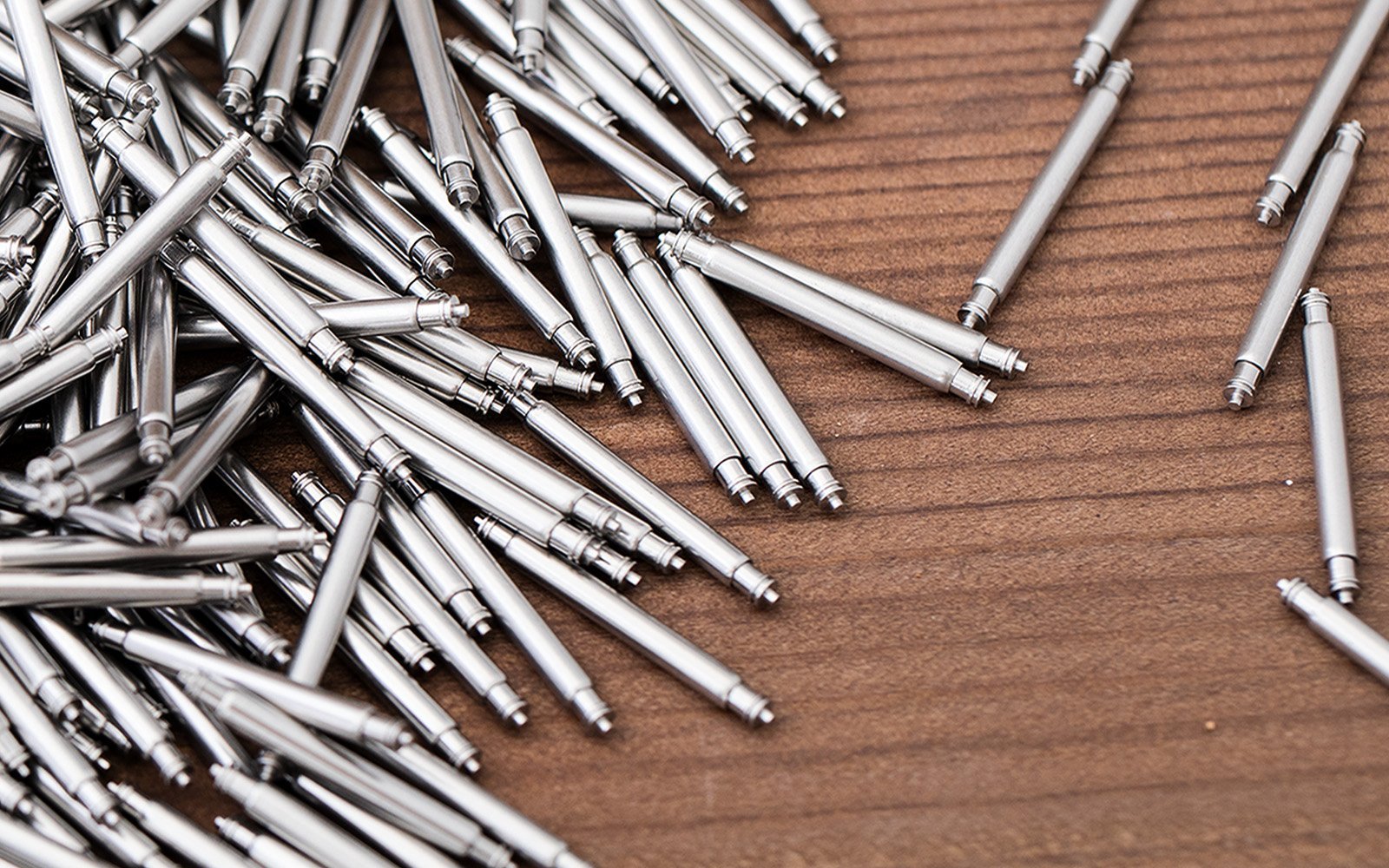
(source: strapcode.com)
Don’t Gamble A Couple Thousand On A Couple Millimeters
But what is one to do about mitigating spring-bar failure risk? Start by buying from reputable watch strap and bracelet brands. Don’t entrust the well-being of your Seiko, Rolex, whatever — the watch love of your life — strap monster though it may be, to mystery spring-bars from who-knows-where. Also, if you expect to play rough, size up. It may take some trial and error, but you essentially want the fattest spring-bars that can still fit the strap/watch combo. I now have 2.5mm spring-bars on my daily beater, as it gets thoroughly beaten daily. No problems yet!
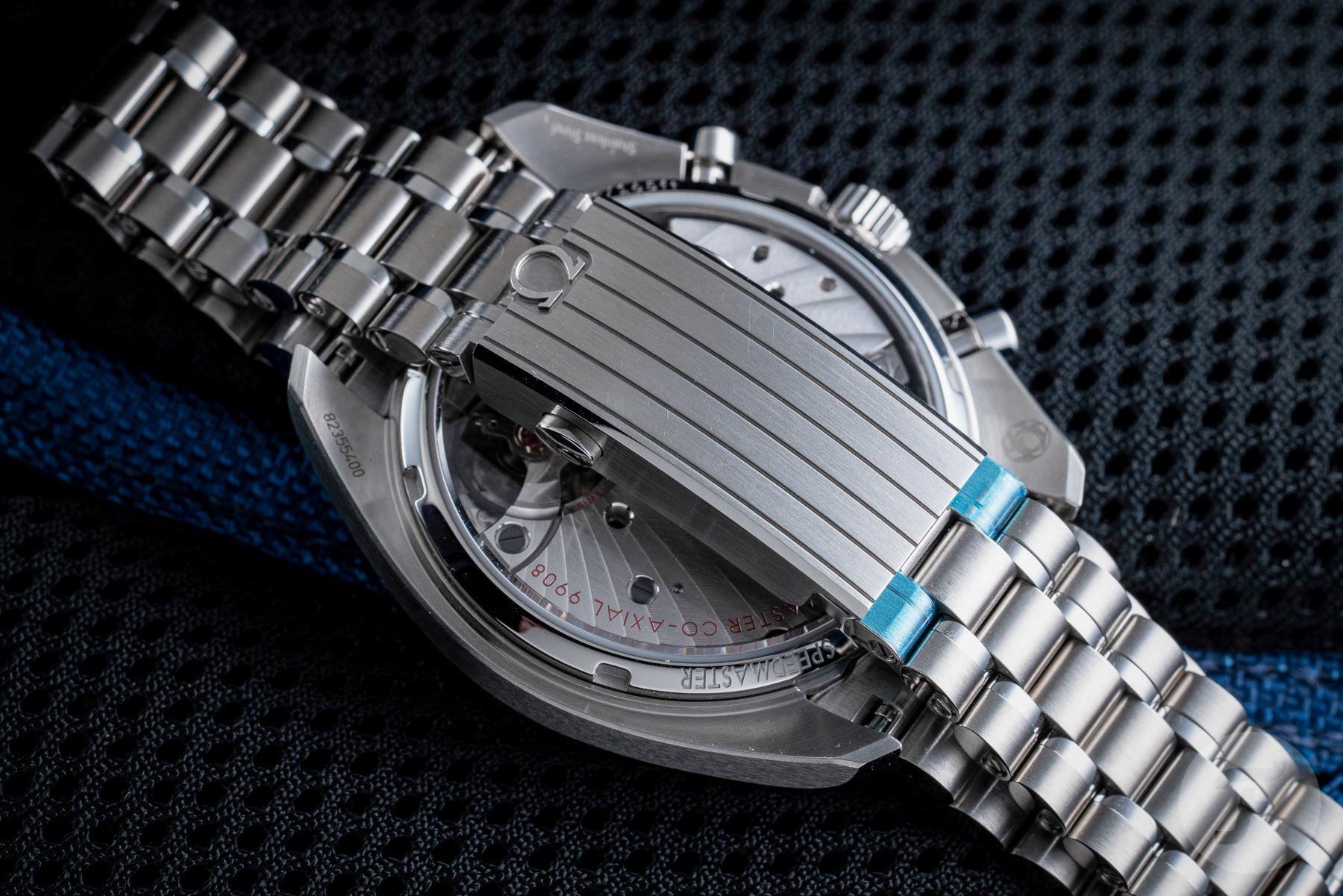
A Bit About Buckles and Clasps
Now, all this talk of shattering wrists and unbendable spring-bars is nice and all, but the last part to examine is the other end of strap connections. Cheap Natos come with cheap buckles. Milanese mesh comes with clasps, commensurate with their quality. Leather straps, well, they could come with anything, really. One of the infinite choices available to you with a leather strap is what type of closure it has. Folding clasps (double locking, butterfly, etc.) offer a level of sophistication and security, maintaining a complete loop around the wrist open or closed. These sometimes come with micro-adjustments, perfect for finding and maintaining that perfect fit throughout the day. Tang buckles are simple and classy, but visibly wear down a leather strap. This may be distasteful or enjoyed depending on the person.
Any of these styles come in a myriad of finishes and metal colors (or metals, actual) to match the watch with which you’re pairing. Typically, the clasp will mirror the quality of the strap, so it’s mostly a matter of preference. I would suggest steering clear of cheaper stamped metal clasps. Just as with bracelets, you don’t want a hair puller, and like spring bars, you should prioritize security.
The Stoic Bracelet
But some bracelets don’t pull hair and do their job quite elegantly. Aftermarket bracelets are a little rarer when it comes to wrist-wrap upgrades. The lack of a fitting end link — the piece of the bracelet that visually connects it to the body of the watch — in more universal bracelets, makes for a more retro look, as opposed to a visually cohesive, well-fitting unit. However, some companies have met the demand for bracelets for certain popular watches that were only ever sold with a strap (my Seiko Alpinist, for example). These third-party bracelets include fitted end links, making for a combo that looks every bit OEM (original equipment manufacturer).
But there are aftermarket bracelets that bank on that vintage look, sans end link. The most common style that comes to mind is the stretch metal bracelets. These evoke true 1950’s short-sleeves-plus-tie, chain-smoking goodness. With typical and not-so-typical clasps, these hug the wrist with even tension, the internal springs creating a seamless svelte look and fit. There are many reproducers of that style at work today, as well as a couple of surviving original brands. Forstner is a company capturing the mid-century bracelet essence wonderfully, with and without stretch. But beware: stretch bracelets are the true hair pullers, though that hardly stopped the horn-rimmed spectacled professionals of the past century.
Olongapo and Other Oddities
That’s the gist of what’s available for regular folk. If you’ve gotten this far and aren’t satisfied with your options, don’t despair. There’s a dark underbelly to watch fastening devices that even the most thorough strap and bracelet sellers don’t dare stock. I’m not talking pangolin or narwhal leathers. I’m talking Vietnam-era one-off bracelets for Rolexes, Native American silversmithing, and the sweet-sounding “rrrrsscchhhhhtt” of Velcro, for starters. But I’ll leave that for another article. For now, I leave you with these very respectable, handsome options, and a lone photo of what’s to come: an Olongapo Bracelet.
For those that want no part in the weird world of watch strapping, I hope that the basics covered in this article helped fill in the gaps of what’s possible to make your watch and watch-wearing experience more enjoyable, comfortable, and functional. Please let me know if there’s anything I missed. There are 1001 ways to wear a watch, it’s hard to catch everything worth mentioning. And if you have ideas for the weirder ways a watch can be worn, feel free to share that too. You may see it featured soon.

